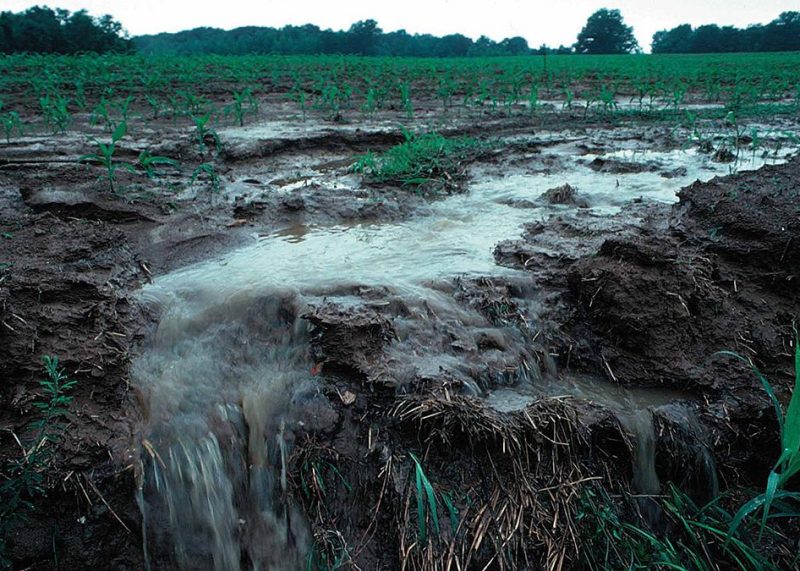
Gypsum, a common waste product from coal-fired power plants, is being used to reduce water pollution in a Wisconsin-based experiment.
As we know, the Midwest is one of the seats of US agriculture. Meaning there’s manure everywhere. That’s great for the crops and soil, but it’s not as beneficial to the water table. When it rains, phosphorus and nitrogen from the manure leach out and create algal blooms that cause a lot of damage to aquatic ecosystems.
Gypsum might be an answer to this problem. Or at least part of one. Farmers have been using gypsum to help their soil retain water since colonial days. This is due to gypsum’s calcium, which binds with phosphates into larger, heavier particles that won’t wash away.

Gypsum is traditionally mined, which makes it really expensive. But coal-fired power-plant cleaning processes have created a new variety of gypsum: flue-gas desulfurization (FGD) gypsum. Since it’s technically a waste product, FGD gypsum is a lot cheaper than mined gypsum (which is expensive due to shipping costs). And it’s been cleared for agricultural use.
Subsequently, researchers from the the University of Wisconsin, the Sand County Foundation, and We Energies are studying the environmental effects of FGD gypsum on select test sites in Wisconsin. The upsides are reduced water runoff and less phosphorous in the water table. And previous experiments show reduced levels of toxic aluminum and higher amounts of calcium and sulfur in FGD gypsum-laced soil.
The downside, at least for the Midwest, is that heavy rains could leach phosphorus into the water. Keeping in mind that climate change is expected to bring heavier rainfall to the Midwest, that’s a risk worth taking seriously.
This article was featured in the InsideHook newsletter. Sign up now.






















